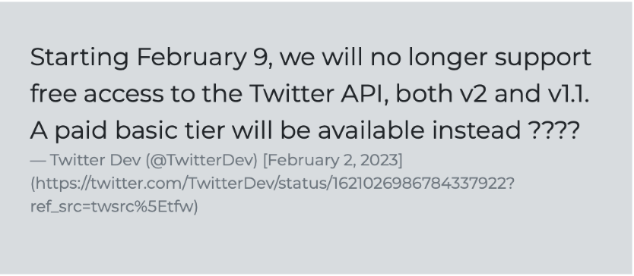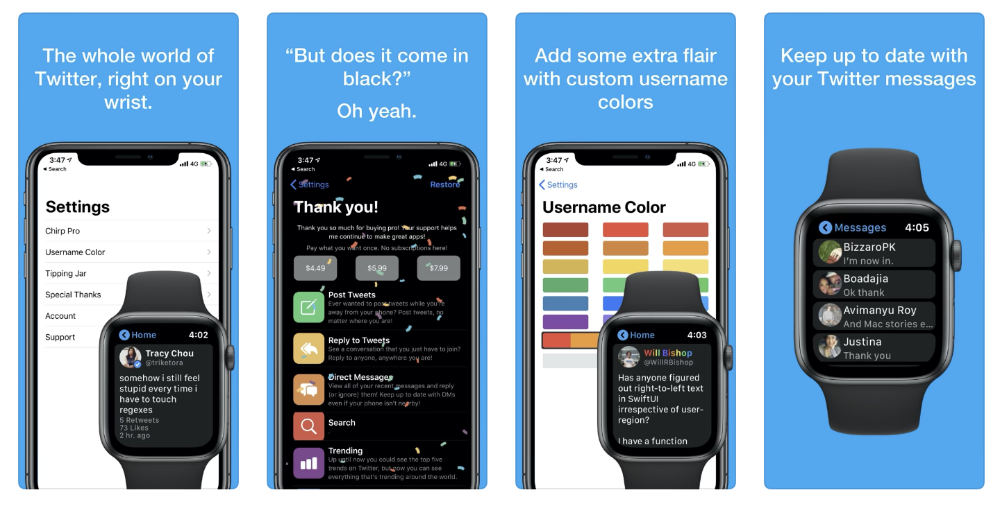Twitter’s Roller Coaster Ride
The past year has been wrought with a plethora of new social media networking platforms and migration to alternative platforms such as Mastodon, Post.News and Tribel as a result of Elon Musk’s purchase of Twitter in October of 2022. Many Twitter users were opposed to his purchase, but nevertheless were willing to wait and see what he would do with the platform.
I suppose one could argue whether it was a good idea for a billionaire with no experience or expertise in social media networking to simply want to own one of the most popular social media platforms in the world. Within days of the purchase, Elon Musk laid off approximately one half of the Twitter staff, formed a content moderation council tasked with content moderation (while cutting a huge number of previous moderation staff) and revamped the subscription service.
Musk originally wanted to charge $20 per month for a Twitter subscription, but then decided upon $8 per month or (or $96 annually) for paid verification, increased tweet reach, and allowing users to acquire a blue checkmark. Special note here: iOS subscribers pay an additional $3 a month to cover Apple’s 30% in-app purchase tax. The lack of actual verification of human subscribers, but instead an outright purchase of the blue checkmark, serves only to increase Twitter’s revenue since verification of user identity has been taken off the table (with the exception of government entities and businesses). I can’t imagine that for most people a paid subscription is worth the ability to downvote other accounts or priority listing replies and improved search. But then I suppose there will always be those who are willing to pay for the coveted blue checkmark.
Some indication that Musk’s Twitter made an error in ditching the verification process is news that Twitter is reinstating an application process for verification of government-affiliated profiles aimed at confirming identity and eligibility. Government and business entities will now have different classifications.
Upon purchase of Twitter, Musk also indicated his desire to reinstate user profiles previously banned from using the app for having broken the platform’s rules. Thousands were reinstated only to be banned again.
After Musk’s young son was confronted by a stalker, Musk announced that no doxxing would be allowed; action would be taken against any Twitter account user sharing live location information.
Twitter also tried to ban links by users to any competing social medial networking sites including Mastodon, Facebook, Tribel, Post.News, Nostr and Instagram but this decision was short-lived and reversed when users threatened to delete their accounts and move to another platform.
And then came the announcement that Twitter’s API would no longer be free.
Twitter API and It’s Effects on Third-Party Apps
When Twitter launched its social media platform in 2006, it gave free access to its backend to researchers and academics. Access to Twitter’s API, or application programming interface, allowed them to access data on conversations occurring on the platform, and see in real time, what the world was talking about.
And then this happened . . .

Not only have researchers and academics used Twitter’s API, so has third party developers to connect their products using bots and plugins as well as separate applications to the Twitter social platform. However, the research community and academia may not have the ability to fork out hundreds of dollars a month and since bots rely on API for their automated accounts, many have lost access due to their inability to pay.
What are bots?
Bots range from the silly to useful. Here are some examples of bots:
- @infinite_scream : An Infinite Scream (now on Mastodon @botsin.space/@scream)
- @oldroadside : old roadside pictures posts public domain photographs from the John Margolies roadside America archive in the Library of Congress.
- @TVCommentBot : bots that watch TV “I am a bot that watches live broadcast TV and improves it with new dialogue.”
- @FloodForecast : check a flood forecast Flood forecast maps for England & Wales. Updated daily from Environment Agency data.
- @earthquakeBot : @earthquakeBot tweets whenever an earthquake with a magnitude greater than 5.0 is detected anywhere in the world.
- @BigTechAlert : @BigTechAlert follows all the Twitter activity of the world’s biggest tech companies and CEOs, primarily posting about who these profiles are following on the platform, and who they unfollow.
- @dscovr_epic : The world is a beautiful place, and you can find stunning images of the Earth via @dscovr_epic, which uploads pictures taken from the DSCOVR space craft.
- @tinycarebot : We all need some self-care during stressful days, and @tinycarebot pops up in your feed every few hours with a nudge to get you to drink more water or step outside for some fresh air.
Many third-party applications such as IconFactory’s Twitterrific and Tapbot’s Tweetbot were caught off guard when Elon Musk cut off their API access, basically barring any applications which competed with their own. Both had a large user base who wanted an ad-free social media experience, a “safe haven” from unwanted changes and how and in what order their tweets appeared (or did not appear) in their stream. Twitterrific’s Blue Bird Mascot came to be associated with the identify of Twitter itself and the term “tweet” used by Twitterrific users was later adopted by Twitter. These third-party apps played a large part in how we used Twitter and our mobile apps and is a testimony to the value of outside developers and their impact on a particular service. It appears that TweetDeck will be offered as an ad-free Twitter Blue exclusive feature contrary to the fact that Twitter Blue isn't ad-free, meaning that only paying Twitter users will have access to the app.
Twitter and the Apple Watch
Apple Watch users noticed in September 2017, that Twitter had disappeared from the Apple iTunes App Store, no longer referencing it as compatible with the Apple Watch. In fact, the Twitter Watch App was removed in iOS version 7.8. In my opinion, the Twitter app for the Apple Watch was by far the best Twitter app for the Apple watch. Although some apps may not be ideal for the Apple Watch, I feel that Twitter’s Apple Watch app was spot on, and for anyone using Twitter, would have been one of their core apps.

Since Twitter does not support the Apple Watch, enter a third-party web-based Twitter interface app called Chirp for Twitter, which was designed specifically for the Apple watch allowing users to access their timeline, mentions and notifications and retweet or like Tweets. The iPhone version of Chirp for Twitter is simply used to set up your watch app and purchase a Pro version. Chirp for Twitter operates on a "pay-what-you want" model; pricing of $1.99, $2.99 and $4.99 will get you the same pro product which allows you to:
- Post tweets
- Reply to tweets
- View and send direct messages
- Search for users and tweets
- View more than 5 trends

Twitter API is now behind a paywall, meaning that third-party software developers needing to access API data for their own products will need to choose one of the developer platforms offered by Twitter. Developer Platforms include offerings of Free, Basic (@ $100 per month) and three levels of Enterprise (reportedly as high as $42,000 per month).
What are the alternatives?
Some Twitter users stayed; some left to find another social media networking alternative that was less visceral, ad-free, more content rich or simply to follow those they followed on Twitter but who left to join another platform. I doubt we will see Twitter’s demise any time soon, but what we will see is relevant competition with other social media networking platforms such as Mastodon, Post.News and Tribel, whose subscriber base has substantially increased over the past few months. Keep in mind, that Post.News is relatively new, launched in November 2022 by Noam Bardin, Chief Poster and founder and CEO of Post (previously CEO of Waze at Google). Mastodon was created by Eugen Rochko, Founder, CEO and lead developer @Mastodon, Germany and announced on Hacker News in October 2016. Mastodon gained significant adoption in 2022 in the wake of Twitter's acquisition by Elon Musk. The project is maintained by German non-profit Mastodon gGmbh.
Elon Musk announced Friday, May 12, 2023 that he's hiring Linda Yaccarino to be the new CEO of San Francisco-based Twitter, which is now called X Corp. He said Yaccarino's role will be focused mainly on running the company's business operations, leaving him to focus on product design and new technology.
